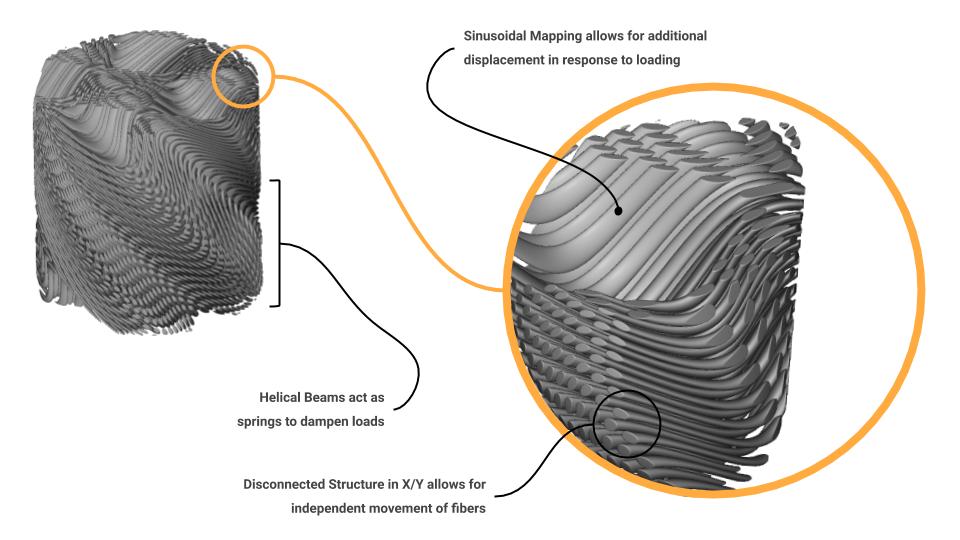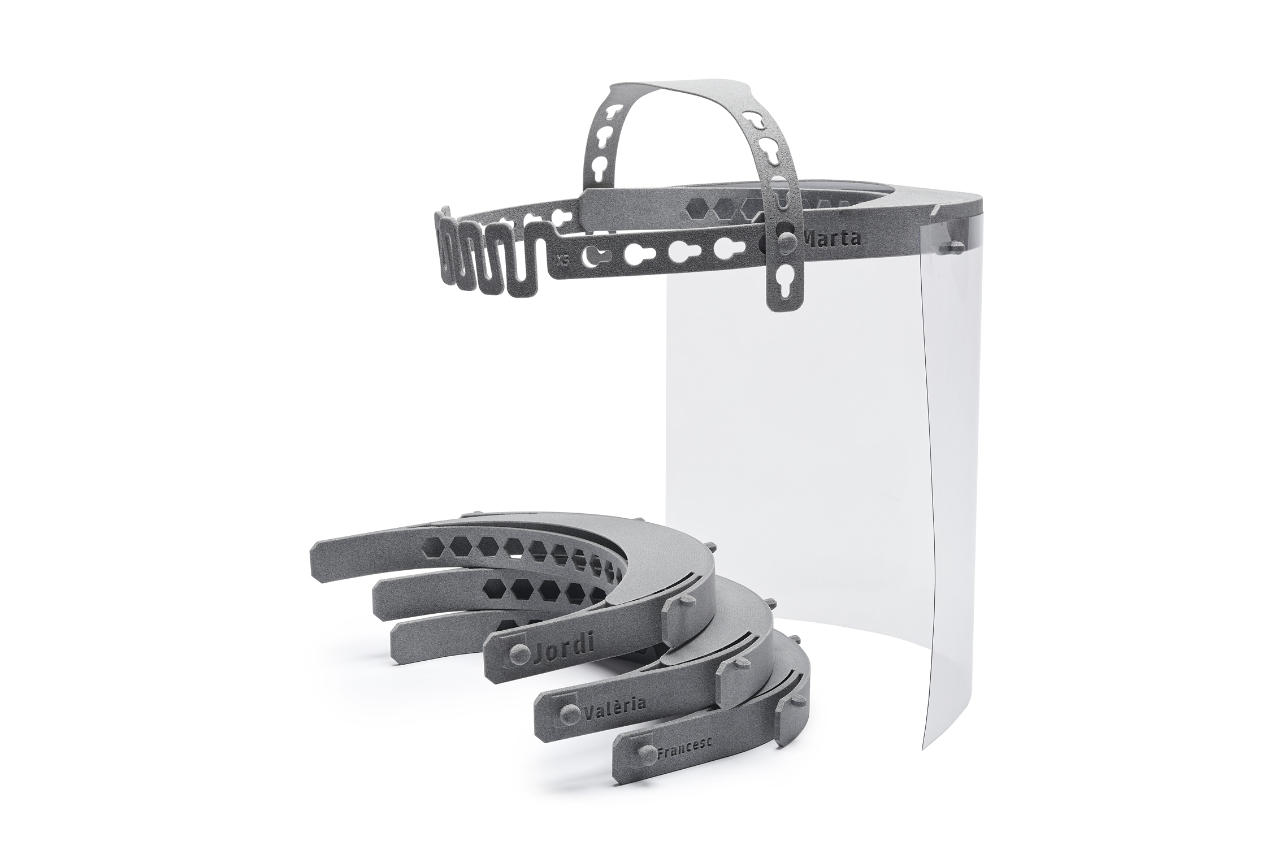Last week, we discussed the first week of AM InDepth, Additive Manufacturing Media‘s series of free educational discussions with top names in production 3D printing. During the second week, experts focused on the benefits of additive manufacturing technology to overcome broken supply chains during the pandemic, solve age-old injection molding problems, and even imitate some of nature‘s most complex biological structures to create implants for humans. The hour-long educational sessions were part of the IMTS Spark platform, which ran from September 28 through October 2, as a virtual replacement for the manufacturing trade show held in Chicago every two years.
Since the World Health Administration (WHO) announced the COVID-19 outbreak as a pandemic on March 11, 2020, 3D printing pioneers have stepped up to combat the devastating effects that the unexpected infectious disease had on the world‘s supply chains. For Clara Remacha, Strategic Accounts Project Manager at HP‘s 3D Printing and Digital Manufacturing, the pandemic revealed infrastructure fragilities that have been long overlooked. During one of the panels, Remacha described that since the onset of the pandemic, she was part of HP‘s task force to develop applications specifically for front line workers. It was a chance for the 3D printing industry to demonstrate its capabilities, and HP was committed to helping doctors, nurses, and other essential workers, said Remacha.
Based in Barcelona, Spain, Remacha and her colleagues saw first hand the damaging effects of the rapidly rising pandemic on its population, quickly becoming the world’s fourth-largest COVID-19 outbreak and the second country in Europe to record half a million cases. Time was critical, and with all the vital hospital supply chains completely broken due to the country‘s lockdown, the team worked non stop for eight weeks to print more than four million parts, including face shields, swabs, CPAP connectors, respirators, and more. Remacha said that “time pressure accelerated innovation to solve supply chain challenges” and that she witnessed many industries shifting their production line to 3D printing in less than two days, showing the world the flexibility of the additive tool and accelerating its adoption.

Field ventilator that includes 3D printed parts made with HP MultiJet Fusion technology. Image courtesy of HP.
3D printing may well be the beginning of a major global shift, but 3D pioneers have been researching the technology for years. During another session, AM engineer at Cumberland Additive, Brenna McCornac described the company as having “tons of data” gathered throughout the last decade to understand the AM process and compare machine performance metrics and determine best practices. The volumes of data collected through analysis allows Cumberland to drive continuous improvement while making data-driven decisions on the manufacturing process.
Companies need to know what their machine is doing and what it’s capable of so that users can make data-driven process improvements with the end goal of creating repeatable quality parts, said McCornac. Moreover, when it comes to operating multiple AM machines that need to reliably produce the same product, implementing process control is very important. A critical piece to successfully achieve machine-to-machine consistency is data on machine performance. The talk focused on how repeatability from build to build and from machine to machine can only be achieved when machine performance is understood and controlled.

Comparing tensile strength in serial production of Nickel 718. Image courtesy of Cumberland Additive.
Additive is also helping solve age-old injection molding problems, as the title of the next session suggested. Here, one of the world’s largest auto manufacturers, General Motors (GM) teamed up with AM global technology and quality leader EOS to create plastic injection molds using metal AM, in order to solve a variety of problems that have inconvenienced Original Equipment Manufacturer (OEM)‘s for decades. Paul Wolcott, Senior Process Engineer at GM, and Jorge Cisneros, Applications Engineer at EOS North America, described the experience from the tooling side, looking at applications that are taking advantage of conformal cooling to enable cooling or heating where traditional machining is impossible.
Using AM, GM and EOS developed clog-resistant injection molds that can be cleaned quickly using ultrasonic technology. Particularly, the goal of the GM-EOS ongoing study is to create an injection mold for speaker grille tools. According to Wolcott, while recent conventional solutions tried to use porous steel it still resulted in little control on the vent path and limitations on material properties leading to a lot of quality issues. Instead, AM provides an opportunity for more control over the vent design.
The goal of the study was for GM to work with EOS to create some of these tools with degassing vents set to GM‘s desired dimensions, ultimately looking at reducing cleaning time and overall improve the quality of the tool. Eventually, the team was able to print a sample tool section which had clean vents in all locations and was an improvement over the original conventional tool, enabling in-house production of injection molding tools, reducing the cost of the tool and the lead time for the tool, reported Cisneros.
In another presentation, Matthew Shomper, Director of Engineering at Tangible Solutions 3D, has been using the principles of biological structures to enhance the design and functionality of human products, particularly medical implants. Tangible Solutions is already specializing in 3D printed titanium, orthopedic implants, and other medical devices, but Shomper is investigating some of the most complex biological structures found in nature to improve the impact resistance of implants (particularly spinal titanium implants).
Shomper has studied several natural structures, including the mantis shrimps, which at less than four inches can strike with the force of a rifle bullet, able to shatter aquarium glass and crab shells alike. Also, the bighorn sheep, capable of sustaining massive impact loads to the head during ramming, making the dynamic structural behavior of bighorn sheep horns and skulls a very interesting study. Although there is still a lot to learn from nature when it comes to the design of advanced components, by investigating some of the most complex biological structures, Shomper has been able to use current tools (particularly nTopology) to create computational models that he then 3D prints for use. In an attempt to mimic the structural principles of these biological armors, the expert indicated that he is currently working with customers to apply these structures to a prototype component and even a functional part, eventually moving towards the capability of designing armor-like features in implants, making them regularly repeatable and customizable.

Computational modeling of the mantis shrimp’s telson armor allows for its application in impact-resistant. Image courtesy of Tangible Solutions/nTopology.
Finally, Pradeep Bhattad, Business Development Manager at ZEISS AM Process and Control, discussed how critical it is in AM to properly understand how the processing parameters influence the form, size, and microstructure of the final components. Showing the case study of an additively manufactured heat exchanger for Air Force sustainment, Bhattad analyzed important aspects of the process, including defect detection; accelerated identification and mitigation of key parameters affecting the quality; the performance of AM parts, and how to carry out the correlative measures of the fabricated part using X-ray computed tomography (CT) for non-destructive testing tools and metrology applications. This approach utilizes a multi-scale, multi-modal workflow, designed to handle the complexity of the entire AM process chain, starting from raw materials to the finished parts. According to Bhattad, the outcome would be much faster and a much more cost-effective development process, which today might cost millions of dollars and might take even a few years to develop in some industries.

ZEISS´s holistic integrated process for additive manufacturing. Image courtesy of ZEISS/Pradeep Bhattad.
The complete lineup of AM In-Depth educational sessions is available to watch on-demand.
Subscribe to Our Email Newsletter
Stay up-to-date on all the latest news from the 3D printing industry and receive information and offers from third party vendors.
Print Services
Upload your 3D Models and get them printed quickly and efficiently.
You May Also Like
Nikon SLM Solutions Sells SLM 500 to Primary Weapon Systems to Expand Suppressor Production
Primary Weapons Systems (PWS) is a Boise, Idaho-based manufacturer of suppressors, firearms, and related components. A subsidiary of Vigilant Gear and a sister company to aftermarket Glock slide manufacturer Lone...
3DPOD 261: Tooling and Cooling for AM with Jason Murphy, NXC MFG
Jason Murphy´s NXC MFG (Next Chapter Manufacturing) is not a generalist service; instead, the company specializes in making tooling. Using LPBF and binder jet, the company produces some of the...
HP and Firestorm Labs Form Partnership to Use Multi Jet Fusion 3D Printers in Deployable Factories
HP Inc., maker of a range of additive manufacturing (AM) solutions including the Multi Jet Fusion (MJF) ecosystem, has announced a partnership with Firestorm Labs, a developer of containerized, deployable...
3D Printing News Briefs, July 2, 2025: Copper Alloys, Defense Manufacturing, & More
We’re starting off with metals in today’s 3D Printing News Briefs, as Farsoon has unveiled a large-scale AM solution for copper alloys, and Meltio used its wire-laser metal solution to...


































